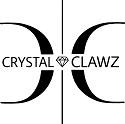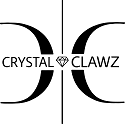Acetone Vs. Non-Acetone Removers
As you would expect, acetone-based removers contain the solvent acetone. According to industry scientist, Doug Schoon, the most common non-acetone polish and product removers contain ethyl acetate or methyl ethyl ketone. All three of these solvents can temporarily dry the nail plate with overuse and all are equally safe, he says. Acetone-based removers will work more quickly and efficiently, which is ideal in the salon setting. Non-acetone polish removers will increase removal time.Gel Vs. Acrylic
Gel and acrylic are actually both chemically a part of the acrylic family. This is why you will hear some educators and other industry professionals refer to acrylic as liquid-and-powder or monomer and polymer. By using the terms "gel" or "liquid-and-powder," you designate the product you are using within the acrylic family. Soft gel is similar to liquid-and-powder in that both can be removed by soaking. Hard gel fives the additional benefits described on the next page, but is viewed as a more permanent option. What to tell clients: "Let's take a look at the condition of your natural nails along with your lifestyle and activities to choose the ideal coating for your nails. Liquid-and-powder is a great option if you’re very hard on your nails and gel is ideal if you’re frequently exposed to solvents through excessive hand washing,using hand sanitizer, cleaning, and so on.”
What to tell clients: "Let's take a look at the condition of your natural nails along with your lifestyle and activities to choose the ideal coating for your nails. Liquid-and-powder is a great option if you’re very hard on your nails and gel is ideal if you’re frequently exposed to solvents through excessive hand washing,using hand sanitizer, cleaning, and so on.”
Hard Gel Vs. Soft Gel
A hard gel is meant to be a permanent enhancement that is solvent resistant. This means that removal consists of filing it down to a very thin layer and allowing the remnant to grow off. A soft gel is meant to give you the crystal clarity of a hard gel with the option of a soak-off removal. Both may be used with tips, over forms, or as a natural nail overlay. What to tell clients: “If you are looking for an enhancement and you are willing to make a commitment to upkeep, hard gel is a great solvent resistant option. Should you have something more temporary in mind, or plan to wear gloves diligently for housework, gardening, and other activities, a soft gel will work well.”
What to tell clients: “If you are looking for an enhancement and you are willing to make a commitment to upkeep, hard gel is a great solvent resistant option. Should you have something more temporary in mind, or plan to wear gloves diligently for housework, gardening, and other activities, a soft gel will work well.”




